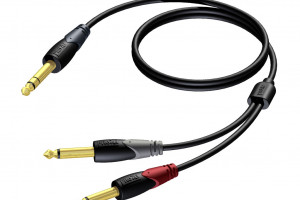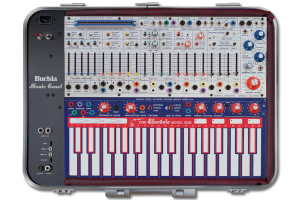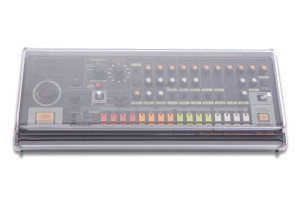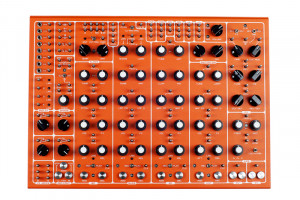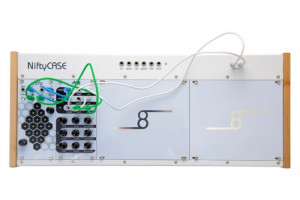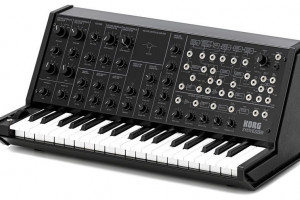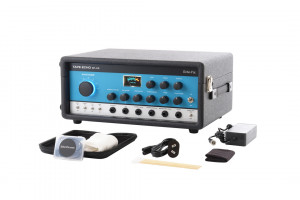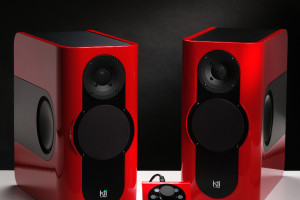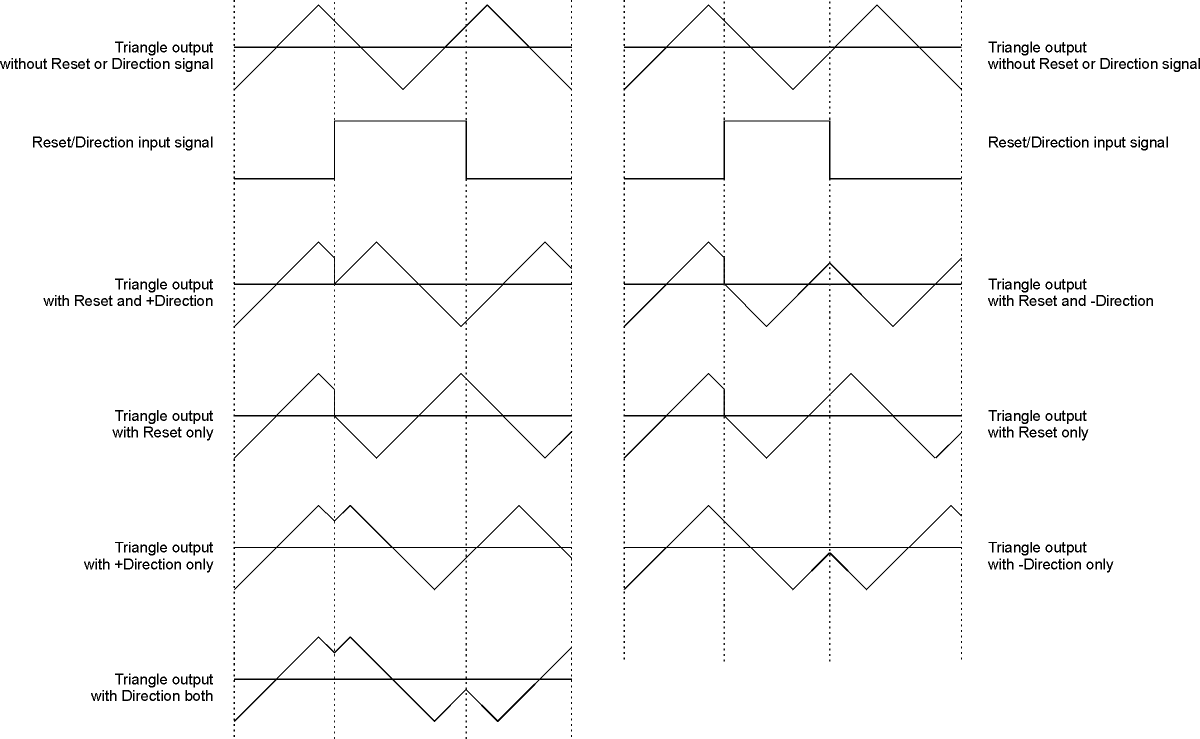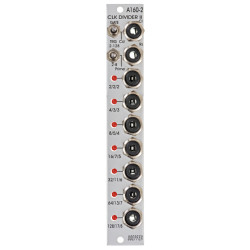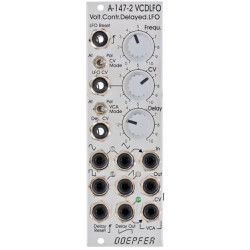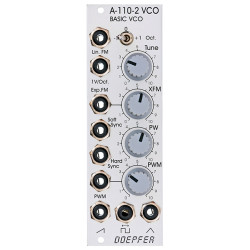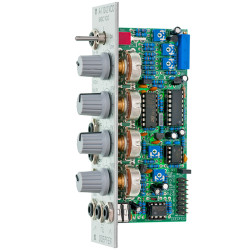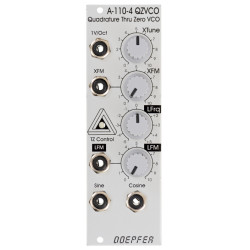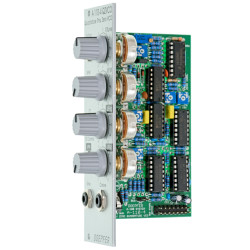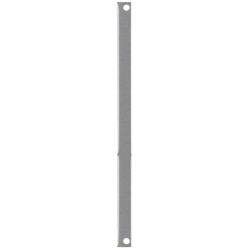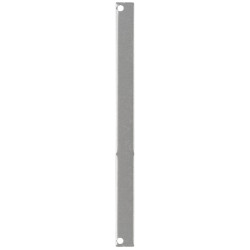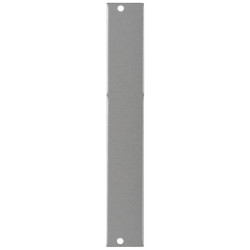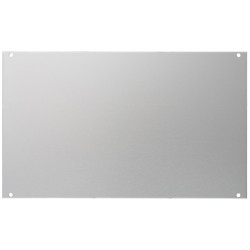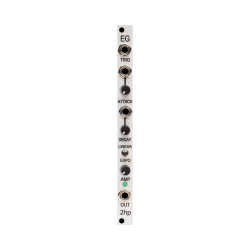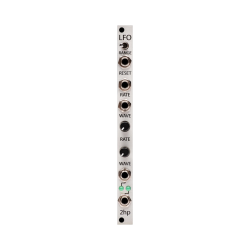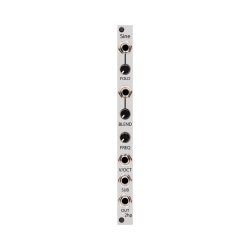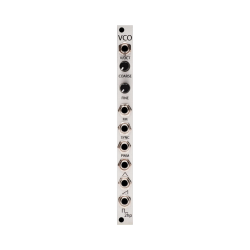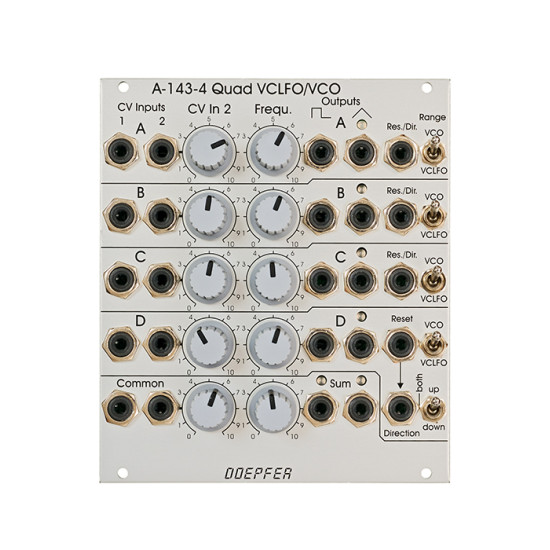
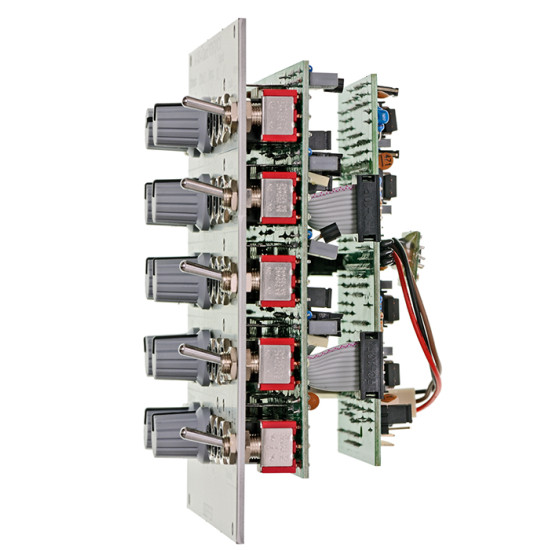


- Stock: In Stock
- Model: DOEPFER-A-143-4
More from this brand
Module A-143-4 is a fourfold voltage controlled low frequency oscillator (LFO). As the frequency range includes moderate audio frequencies it can be used as a four-fold VCO too.
Important Notes: The module was planned mainly as a quad VCLFO. But we added a range switch (nothing but a switch for two different capacitors) so that even audio frequencies are possible and the module can be used as VCO with some restrictions too. Because of the closeness of the main circuitry (i.e. four VCO cores within less ~ 1 square millimeter) the oscillators may lock if the frequencies are very close to each other. This document explains the functions of the 17 jumpers: A143_4_jumper.pdf |
Technical details concerning the Reset and Direction function: The reset of a triangle based LFO or VCO consists usually of two functions:
For unit #4 all types of sync are available:
|
|
| Breite/Width: 22TE / 22HP / 111.4 mm Tiefe/Depth: 60 mm (gemessen ab der Rückseite der Frontplatte / measured from the rear side of the front panel) Strombedarf/Current: +100mA (+12V) / -100mA (-12V) |
|
Breite/Width: 22TE / 22HP / 111.4 mm |
-285x169.png)
